Hamstring Muscle Pain
What is a Hamstring Muscle Pain?
Hamstring muscle pain refers to discomfort or soreness in the muscles located at the back of the thigh, known as the hamstrings. These muscles play a crucial role in various leg movements, including walking, running, and bending the knee.
Hamstring injuries and pain are common, especially among athletes and individuals engaged in activities that involve sudden acceleration, deceleration, or intense stretching.
Introduction
The hamstring is the muscle of the back of the leg. The most typical sign of overuse, discomfort, and spasms in the hamstring muscles, which are found near the back of the thigh, is hamstring pain. If you sense discomfort and aches is indicative of a hamstring strain or injury.
The most frequent injury to the hamstring muscle is a strain, which mostly affects athletes who play sports like track, basketball, soccer, or sprinting. Athletes who run and sprint are particularly prone to damage to their hamstring muscles.
When reducing speed, and changing direction, the hamstring muscles are severely strained. When running, extending the leg is overstretching the hamstring muscle.
When the patient is doing well, mild hamstring muscle injuries can be treated with rest, ice, and over-the-counter (OTC) drugs. More severe instances require months to recover. For exercise, get in touch with your doctor and physiotherapist in severe circumstances.
Anatomy of The Hamstring muscle
Skeletal muscles include the hamstring muscles. Since these muscles are voluntary, an individual may regulate how they move and function.
The three hamstring muscles in the human body are located behind the thigh.
These muscles are employed in a variety of leg motions, including walking, climbing stairs, and squatting. These hamstring muscles are responsible for rotating the lower leg from side to side, flexing the knee, and extending the thigh at the hip joint.
The muscle that is closest to the skin is the biceps femoris.
The muscle that is closest to the body’s center is the semimembranosus.
The semitendinosus muscle is situated between the biceps femoris and the semimembranosus muscle.
What makes up the muscles in the hamstrings?
Thousands of small, elastic muscular fibers make up the hamstring muscles. The hamstring muscle’s muscular fibers aid in the contraction and tightening of the muscles.
These are reddish-white muscle fibers.
Therefore, the striated (striped) muscle that is visible beneath the skin may be examined in this hamstring.
Causes Of the Hamstring Muscles pain
During workout: This muscle in the hamstrings When the hamstring muscle lengthens and contracts (shortens) during a regular workout, strains, and tears occur.
Excessive stretching of the hamstring muscle: it is occurs during a regular workout can also result in this type of muscle injury.
Overload: it is the primary cause of the hamstring damage.
Tendinitis: Muscle soreness results from tendinitis, an inflammation of the tendon that happens after an exercise. It happens following a workout that involves repetitive motion at the knee joint. The movements exacerbate this tendinitis pain.
Tendon rupture: Rarely, discomfort from exercise is caused by a ruptured tendon. A substantial rip in the tendon is referred to as a tendon rupture. There is both partial and complete tendon rupture.
Delay onset muscular soreness, or DOMS: It’s encouraging if your muscles are screaming today from yesterday’s workout. The term for it is DOMS or delayed onset muscular soreness. Muscle fibers can develop microscopic rips when overworked.
Risk factors for Hamstring Pain
- Using the Sore muscles to exercise.
- Athletes are more likely to sustain an injury because of their tense muscles.
- Muscular imbalances, whereby certain muscles are more powerful than others.
- Muscle’s inadequate Power
- muscle fatigue, as weary muscles are less able to absorb energy
- A higher danger applies to older athletes who mostly exercise by walking. Likewise, teenagers whose bodies are growing. Bones and muscles don’t always grow at the same speed. indicates that any effort or stress applied to the muscles—such as from a jump or an impact—leaves them open to tearing.
- The nature and degree of hamstring muscle discomfort varies from person to person and depends on the underlying cause of the pain. A severe, dull, aching ache in the back of the leg, often accompanied by tightness, is how some people describe their hamstring pain.
A common cause of hamstring muscle tension is participation in the following activities:
- Basketball
- Dancing
- Tennis
- Running
- Football
Signs and symptoms of Hamstring Muscle Pain
Among the symptoms that could point to a more serious illness are:
- Bloating
- Numbness and tingling in the leg
- Leg weakness
- blue color of the leg
- fluids retention
- Pigmentation of the hamstring
- Hamstring warmth and tenderness
- If you have any concerns, you ought to be seeing a physician.
Diagnosis
Physical examination and patient history
People who have hamstring strains frequently visit a physician due to an acute back thigh ache that flares up after exercise.
Your doctor will inquire about the injuries and feel for soreness or bruises on your thigh during the physical examination. To check for discomfort, weakness, swelling, or a more serious muscle injury, he or she will press or palpate the back of your leg.
Imaging Examinations
Your doctor may order imaging tests to help confirm your diagnosis, such as:
Radiography. Your doctor can determine if you have a hamstring tendon avulsion by looking at an X-ray. This is the result of a little piece of bone being dragged away by the damaged tendon.
Imaging with magnetic resonance (MRI). This research can improve the visuals of soft tissues like muscles.
What does your physician check the appointment
Write the following on a list:
Full details regarding your symptoms, including when they started.
details regarding any health issues you may have experienced.
Every medication and dietary supplement you take, along with the dosages.
You have some questions for the future.
Your healthcare professional may inquire about any of the following:
What was the time and method of the injury?
Was there a popping or tearing sound you felt?
Does the pain change or get worse with certain movements or positions?
When is it necessary to call a doctor in an emergency?
with home treatment and normal activities, the tightness in the hamstring muscles does not go away in one to two days.
when your discomfort gets worse over time.
If following a workout, you experience a progressive onset of tingling, numbness, or weakness in your leg.
When the skin becomes warm to the touch and develops a rash similar to a fever.
Treatment of the Hamstring Muscle Pain
Early Treatment
To prevent further injury, stop what you’re doing if you suddenly feel pain in your hamstrings. You are likely familiar with the RICE principle. It will facilitate a quicker and better recuperation for you.
Rice Protocol for Early Treatment
Rest: Avoid activities that could make your injury worse. this could entail taking a complete break or perhaps using crutches or another mobility device.
Ice: Throughout the day, use a cold pack for 15 to 20 minutes every two to three hours. You may even use something as simple as lightly towel-wrapped frozen peas. Avoid putting ice on exposed skin.
Compression: To limit swelling and movement, you might want to consider bandaging your thigh with an elastic wrap.
Elevation: A rise in altitude, Try to keep your leg elevated to the level of your heart on a pillow.
In order to lessen inflammation
After suffering a hamstring muscle injury, adhere to the RICE principle: rest, ice, compression, and elevation.
Use cold packs if there is any swelling.
As soon as symptoms appear, the injury must be rested in order to prevent further tissue damage.
To lessen edema, wrap with elastic.
Apply heat to the injured muscles.
Medical care
Your hamstring strain discomfort may be lessened by over-the-counter painkillers. For short-term comfort, oral non-steroidal anti-inflammatory drug (NSAID) medications like ibuprofen (Motrin, Aleve) or another over-the-counter pain reliever like acetaminophen (Tylenol) may be helpful.
NSAID gels or lotions applied topically can also help reduce pain.
Using a foam roller to offer myofascial release to your hamstrings is another way to relieve pain. To massage the muscles, place the roller just above the back of your knee and roll upward in the direction of blood flow. Additionally, a professional sports massage might ease your discomfort.
Patient Education
In the highly competitive world of professional sports, hamstring injuries are among the most frequent sports-related ailments. It’s also one of those injuries that keeps a player out of the game for a long period and needs to be properly healed before they can play again.
Recurrences occurring frequently could make rehabilitation more difficult. Acute, sharp posterior thigh pain that prevents continued sports participation should be taken into consideration in both non-athletes like dancers and athletes who play running or sprinting sports unless it can be definitively ruled out clinically or radiologically. It’s crucial to talk to the patients about the potential duration of their absence from sports. They ought to be advised about the necessity of surgery in cases of extreme injury or pain.
Physical Therapy Treatment
The objectives of physiotherapy care are:
- alleviate the hamstring pain
- Diminish Edema in the muscles
- strengthening of the hamstring muscles.
- Restore the patient’s whole range of motion
- Use pain-relieving methods during the first few days. Mild to moderate activity without pain should be started following pain alleviation.
Electrotherapy
Ultrasound
Ultrasound improves blood circulation and mobility and has been utilized for tissue healing and repair.
help lessen discomfort and lumps
Cryotherapy
Applying cryotherapy—which involves using ice packs and cold water cataracts—to the affected area can help reduce swelling and inflammation.
It is advised to apply colds continuously for 25 to 30 minutes at a time, multiple times a day.
TENS
TENS, or transcutaneous electrical nerve stimulation, is a potential treatment for pain and spasms in the muscles.
These are the primary clinical uses that IFC seems to have. alleviation of pain, Stimulation of muscles, increases blood flow locally, decreases in Edema
Exercises for Hamstring muscle
Stretching of hamstring muscle
Hamstring stretches while lying down:
As you are Stretch your legs wide apart and lie flat on the ground or a mat.
Using both hands, grasp the rear of the right knee joint to extend the right leg.
Make an effort to bring the leg up to the chest.
Stretch the knee joint slowly until you feel a pull in the muscle.
For thirty seconds, maintain the stretched posture.
Stretch three times in a single session and three times a day.
Hamstring stretches with a strap while lying down
With your legs completely extended, you are resting flat on the ground or a mat. in order to bend and extend the right leg.
Next, position the strap over the right foot’s ball. Both hands should be on this strap. must maintain the left leg extended and the foot flexed on the ground.
The leg and calf are pushed towards the floor in this position.
With the foot flexed, attempt to slowly extend the right leg.
The right leg is straight, with the foot’s bottom facing the ceiling and the knee joint slightly bent. Next, Pull the strap gently until you feel a little tightness in your hamstring muscles. For thirty seconds, maintain the stretched posture.
Stretch three times in a single session and three times a day.
Stretching your hamstrings while lying near a wall
Locate an open entryway first. With your left leg completely stretched on the floor or your back flat, you are either lying on the ground or on a mat.
The left leg is going to go through the opening.
Make an effort to rest your right leg against the wall close to the entrance.
To generate mild stress in the right leg, the distance between the body and the wall needs to be adjusted.
For thirty seconds, maintain the stretched posture.
Stretch three times in a single session and three times a day.
Stretching your hamstrings while sitting
Sitting on the ground with your left leg bent at the knee and your foot facing inward, you can stretch your right leg.
The butterfly stance is what we name this posture.
The right leg should be extended and kept slightly bent at the knee.
Next, bend forward at the waist, being careful to maintain a straight back.
For thirty seconds, maintain this posture.
Stretch three times in a single session and three times a day.
Hamstring stretches while seated in a chair
Your back is straight as you sit close to the chair’s edge.
Feet must remain flat on the ground.
Straighten the right leg with the toes pointed upward and the heel on the floor to extend it.
Strive to flex your hips forward.
Next, for support, rest the hands on the left leg.
Stretch three times in a single session and three times a day.
Hamstring stretches while standing
Your spine is in a neutral posture as you stand up.
With the foot flexed, bring the right leg in front of the body.
The toe pointing skyward and the heel digging into the earth.
Next, bend your left knee slightly.
Attempt to sag slightly forward and rest your hands on your straight right leg.
must maintain a neutral stance.
For thirty seconds, maintain posture.
Stretch three times in a single session and three times a day.
Hamstring stretch while standing at a table:
Locate a table that is a little less than hip height first.
Your spine is in a neutral posture as you stand up.
Flex the foot to allow the toes to touch the table and place the right leg there. Toe toward ceiling upward. Make an effort to distance yourself from the table so that your foot and a portion of your calf rest on it.
Extend your waist forward until your hamstrings are stretched.
Bend forward a little and place your hands on your leg or the table for support to intensify the stretch.
For thirty seconds, maintain posture.
Stretch three times in a single session and three times a day.
Hamstring stretches with towels
Using a towel in one hand and a cozy spot for stretching:
Wrap a towel around the back of one thigh while you are on your back.
must grip the towel’s ends in order to support the thigh.
The thigh is held in place using the hands if there isn’t a towel available.
The other leg must remain level on the ground.
When you feel a stretch in the back of your leg, try to gradually straighten your knee joint.
Seems to be attempting to align the foot’s bottom with the ceiling.
Then, just until the stretch is comfortable, extend the leg and straighten the knee joint.
For thirty seconds, maintain this posture.
Stretch three times in a single session and three times a day.
The hamstring stretches against the wall
This stretching practice is done next to a couch and at a wall corner:
One leg must Be on the floor.
Next, lean the opposite leg against a couch arm and a wall.
In order to get the lifted leg as straight as is humanly possible, try to gently press the knee joint.
Stretch for ten seconds, then progressively extend it to thirty.
Stretch three times in a single session and three times a day.
Stretching your hamstrings on a bed’s edge:
You will be sitting on the side of a bed for this stretching exercise.
With your foot resting on the floor, you are lying with one leg along the edge of the bed and the other leg down.
Bend forward at the hips, while maintaining your spine straight.
Maintaining the leg in the bed as straight as possible without pain
Stretch three times in a single session and three times a day.
Hamstring Stretch for Hurdlers
This floor exercise for stretching the hamstrings of hurdlers is easy to perform.
One leg is straight out in front of you while you sit on the floor.
Place the sole of the second leg against the inside thigh of the other and attempt to bend the other leg at the knee.
Next, bend at the waist as much as is comfortable to stretch forward over the straight leg with your arms extended.
For thirty seconds, maintain this posture.
Stretch three times in a single session and three times a day.
Bending Forward While Standing
This is a simple hamstring stretch that may be deepened by allowing gravity to work its way into the pose. Choose a new stretch and proceed cautiously if your lower back is hurting. With your arms extended high, you are standing erect.
Reaching your hands down towards the floor, bend forward from the hip joint. You should have your hip joint positioned over your ankle joint.
This stretch is not intended to get you to touch your toes.
bending your knees as much as possible (you need to be ever so slightly bent; however, do not bend to get lower as this will not stretch your hamstring muscle). To make the hamstring muscle stretch farther, try to tighten your quadriceps.
For thirty seconds, maintain this posture. Stretch three times in a single session and three times a day.
Active exercise of hamstring
Prone SLR, Prone Straight Leg Raise
An exercise that focuses on the gluteal muscles of the thigh is the prone leg raise. Legs raised in the air, this exercise is typically done while reclining on the floor. Leg lifts are performed by tensing the thigh muscles and raising the legs into the air, parallel to the body. Typically, this exercise is done on a carpet or mat to prevent scratches on the floor. This exercise is also known as hip extensions or prone leg lifts.
This is an easy workout that you can incorporate into your at-home workout regimen. This is a strengthening workout that works your hamstrings, lower back muscles, and hip gluteal muscles. This is a crucial exercise for the rehabilitation of your lower limbs, hips, or spine. Leg, hip, or lower back pain can be caused by a variety of circumstances.
Should your physical therapist determine that you could gain advantages from fortifying your gluteal and lower back muscles?
Physical therapy treatments that involve strengthening exercises can help people with back pain or hip discomfort by increasing their mobility and reducing their symptoms.
As part of your recovery, you could work on strengthening your hips and lower back muscles with certain exercises. It will help you achieve and maintain proper posture or assist you in walking with more grace.
This is beneficial for ladies since it strengthens the thighs and legs.
Prone knee bending
While performing this exercise, you might want to place a small, flat pillow underneath your hips and stomach. resting comfortably and flat on your front. Bend your knee and move your foot towards your buttock in a smooth, controlled motion.
Stop and return your foot to the starting position as soon as you experience any back pain or a strain in your leg or back. Repeat immediately after, moving slowly and fluidly. Do both legs in this exercise.
Maybe perform this exercise steadily for thirty seconds or so, then let go and repeat it once more before getting up. You can do this periodically during the day as you discover that the exercise is increasingly beneficial to you.
Heel press
Although this exercise doesn’t seem very spectacular, it will greatly benefit your leg and back muscles. To reduce back pain and increase stability, it’s critical to strengthen and lengthen your leg muscles. The heel press is performed as follows:
Stretch your legs wide apart while lying flat on your back.
As you press your right heel down against the bed, maintain a straight leg.
For five to ten seconds, maintain this posture.
Repeat ten times, pressing the left heel down each time.
Just remember to stop working out and see your doctor if you feel any pain or discomfort. Additionally, you should avoid forcing motions since this could make your condition worse.
SLR, Straight Leg Raise
With your legs comfortably spread out on the floor and your hips square, lie on your back.
Place your non-injured leg flat on the floor and bend its knee to a ninety-degree angle.
Contracting your quadriceps, or the group of muscles on the front of your thigh, will stabilize the muscles on your straight leg.
Take a calm breath and raise the straight leg six inches off the floor.
For three seconds, hold.
With a controlled exhale, lower the leg to the floor. Unwind and repeat ten more times.
When performed properly, the entire movement will cause tension in your hips, thighs, and abdomen.
Strengthening exercises
The physical therapist will prescribe electrotherapy and massage for two to three days to relieve neck muscular pain. Following this, the therapist will suggest you perform strengthening activities to address neck muscle weakness.
It is always recommended to perform this strengthening activity when you are comfortable and have pain relief.
This whole strengthening exercise relieves the pain and weakness in your muscles.
Downward dog\Dog yoga with a downward face\Reverse Dog
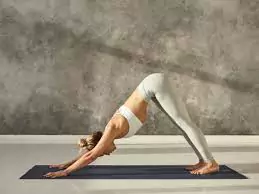
Take a supine position.
After that, raise your knee joint and point your tailbone upward.
Next, slowly extend your legs.
You have to maintain your knee slightly bent since it becomes difficult when your hamstring muscles are stiff.
Remember to maintain a straight back.
After that, inhale deeply and hold the position for as long as your instructor instructs you to.
Take ten seconds to hold this workout position.
Do this exercise three times a day, or ten times in a single session.
Triangle Pose Extended
Begin this workout by standing up.
Try separating your legs by three or four feet.
Next, extend your arms parallel to the floor, pointing your palms downward.
Make an effort to turn your left foot out ninety degrees and your right foot in towards the left.
You have to maintain a straight line between your heels.
With your left hand extended towards the floor and a yoga block for support, try to progressively bend your torso over your left leg.
Next, extend the right side of the arm towards the ceiling upward.
Do this exercise ten times in a single session and three sessions in a day.
Hamstring foam rolling
Using a foam roller to exercise helps you release and stretch your muscles.
Your foam roller is beneath your right leg as you sit on the floor.
Lay your left leg on the ground for support.
Roll the entire back of your thigh, from the bottom of your buttocks to your knee joint, using the support of your arms behind you. You have to concentrate on your abdominal muscles during this exercise.
Roll gently for a duration of 30 to 2 minutes on the foam roller.
Do this exercise three times a day, or ten times in a single session.
Hamstring exercises in Solmetric
These workouts target the hamstring muscles statically, which means that they must be performed at different degrees of flexion (knee bend).
In the prone position, you are lying on your front.
As you tighten your hamstring muscles, the therapist applies tension. Hold the pose for ten seconds before letting go.
Next, To work the muscle at varied lengths, adjust the amount your knee joint is bent.
After exerting your muscles from a variety of angles, perform the exercise with your foot facing outward. Attempt once more while pointing your foot inward.
Both the inner and outer hamstring muscles are worked during this workout. Take ten seconds to hold this workout position.
Do this exercise ten times in a single session and three sessions in a day.
Knee flexion while standing
You use only gravity to bend the other leg as you stand on the other.
As an early-stage workout, begin with this one slowly and carefully.
Once a day, aim for three sets of ten repetitions with this exercise, gradually increasing to four sets of twenty.
when applied to ankle weights, which are meant to further raise the load.
Hamstring pulls
You must maintain your composure while your leg descends due to gravity.
to tighten the hamstring muscles in order to keep the foot from touching the ground.
This has a very mild dynamic training effect and begins to work eccentrically with the hamstring muscles.
Again, start with one set of ten repetitions and increase to three each day.
If you need to put more strain on the muscle, use the ankle weights.
Recall that you should perform this exercise painlessly both during and after, as well as the next day.
Bridge drills:
With your knee bent, you are lying on your back.
To engage the hamstrings and gluteal muscles, elevate the hip joint.
Initially, try pushing up with both feet planted on the ground.
Briefly hold this position and lower it.
Ascend to three sets of twelve repetitions from three sets of eight.
Make progress with single-leg bridges in this workout.
A similar technique is used for single-leg bridges to make sure the gluteal muscles are squeezed.
From the ground up to the knee at the shoulder joint, try to keep a straight line.
Hamstrings curl while sitting
This exercise, which targets the hamstring muscles specifically in a highly constricted close range of movement (ROM), is rather challenging.
A resistance band’s first end is fastened to a stationary object.
The therapist is holding it, and the foot is fastened to the other end.
Strive to tuck your heel into your thighs.
Take ten seconds to hold this workout position.
Do this exercise three times a day, or ten times in a single session.
Hip extensions of a single
An advanced version of the bridge exercise is this one.
Elevate your elbow joint with a step or box, then alternately plant each heel on the ground.
It’s crucial to keep your hips and shoulders still and to maintain adequate core stability when exercising. When your heel strikes the floor, your hamstrings and glutes contract isometrically to maintain your body’s stability.
Take ten seconds to hold this workout position.
Do this exercise three times a day, or ten times in a single session.
One leg lifts up with the ball
This is another workout that targets the hamstrings and appears easy at first but is quite tough.
The hamstring muscles are worked in a highly extended position during this single-leg ball pick-up exercise, especially the muscle fibers closer to the buttock.
After that, step forward with one foot and bend to take up the medicine ball.
To set the ball back down, repeat this motion.
Take ten seconds to hold this workout position.
Do this exercise three times a day, or ten times in a single session.
Take a ball and lunge
Using a ball to help with balance, perform a basic lunge.
The purpose of this exercise is to strengthen the quadriceps, hamstrings, and glutes.
With your damaged leg spread wide in front of the other, you are standing.
Attempt to grasp a medicine ball around your chest.
Next, lower yourself by shifting your weight to your front leg and lowering your back knee to the ground.
Take ten seconds to hold this workout position.
Do this exercise three times a day, or ten times in a single session.
Norway Leg curl
Although this is one of the more difficult hamstring exercises, don’t perform it right before attempting a sprint
To begin, kneel with your ankles held by a therapist.
Then, carefully lean forward as much as you can while resisting the urge to move forward by using your hamstring muscles.
For a more difficult variation, curl back up using your hamstring muscles.
Sumo Squat
Your feet are somewhat wider than your hips as you stand.
Keep your hip joint rotated outward and your toes pointed around 45 degrees outward.
Attempt to extend your arms shoulder-joint height in front of you.
If you’d like to utilize a weight to hold the dumbbells in a goblet posture in front of you and securely at the shoulder joint, Should you choose to utilize a weight, make sure to hold the dumbbells in a goblet posture in front of your chest and tightly at the shoulder joint.
Next, Breathe deeply, contract your core, press your hip joint back, and lower yourself into a squat.
Exhale, halt at the bottom and push yourself back up to a standing position.
The midfoot and heel must maintain an equal distribution of weight.
Do the 12 to 15 repetitions.
Swing a kettlebell
Hold onto the handles of the kettlebell while putting it slightly in front of you. Shoulders must remain back and down.
Your toes are slightly slanted out as you stand with your feet slightly broader than hip-width apart. You need to maintain a straight back and shoulders.
Send your hips back and slightly bend your knee joint. This is not a squat position. Since the knee joint is a hinge on the hip, avoid bending it too much.
In order to reverse the hip hinge, try to grip the kettlebell and roll your shoulder joint back. Alternatively, focus on your core muscles and start the exercise by contracting your hamstrings and glutes to completely extend your hips, After that, raise the kettlebell to your chest.
You must maintain your weight in your heels.
To repeat, try lowering the kettlebell and swinging it through your legs. Complete the 15–20 repetitions and the allotted amount of time.
Verify that you are hip-hinging rather than squatting. You may work on your glutes and hamstrings by using the hinge movement.
One-Legged Deadlift:
You have a slight bend in your right knee as you stand on it. Your left foot will be off the ground as you hold a kettlebell in your right hand.
You have to shift your weight towards the ground and tilt your body forward by hinged at the hip joint. You have to keep your left leg straight back behind you and your chest up.
Stretch as far as you can until your right hamstring starts to tense. You straighten up again, squeeze your glutes, and take a step back to where you were before.
Before switching to the left leg, finish all of the repetitions on the right leg.
Perform eight to ten repetitions for every leg.
Leg curls when lying down
The roller pad should first be adjusted so that it sits over the heels.
The roller pad is positioned over your lower calves as you lie on your stomach. Just be careful to extend your legs completely. Next, Hold onto the machine’s grips on either side.
Lift your feet and flex your knees while maintaining your hips on the bench, or bring your ankles towards your glutes. After pausing for a few while, carefully bring your leg back to the starting position.
Perform the ten to fifteen reps. You’ve chosen a weight that’s not too heavy to allow you to keep precise form.
Lower the weight if, when curling, your hip joint is slipping off the bench.
Press your legs against the ball
Seated on a big exercise ball is you. Step your feet out until your torso is elevated over the ball.
Your shoulder and head are not in line with the ball.
Keep your neck naturally erect and refrain from looking up or down. Set your arms down at your sides.
Make an effort to bend your knee joint as though you were squatting.
Next, push through your heels to go back to the starting position, but this time, your main focus needs to be on tightening your hamstrings. Perform the ten to fifteen reps.
You have to maintain your weight on your heels instead of your toes.
Reverse Plank
Start by laying an exercise mat down on the ground. With your legs out in front of you, you are seated. Try extending your fingers wide or putting your hands slightly behind you.
The hand is positioned parallel to your shoulder joint but outside of your hip joint. Next, elevate your hips and upper torso towards the ceiling by pressing into your hands.
Your head to your heels is a straight line in your body. You Gaze up to the ceiling. Next, tighten your hamstrings, glutes, and core muscles.
After 15 to 30 seconds, hold this workout position and then return to the starting position. Perform the ten to fifteen reps. To enhance the hamstring muscle’s tension, apply a toe tap.
Attempt to flex your right knee and point your toe in the direction of your glutes. Next, extend your leg and tap your toes, or switch to your left leg. Next, carry out this activity one more.
Everyday 5-Minute Plank Exercise
Your feet are somewhat broader than shoulder-width apart as you stand.
Lift a dumbbell with each hand and use it as a weight.
You must maintain a goblet squat position and keep your arms at your sides.
Next, Squat down or gradually bend your legs until your thighs are parallel to the floor by using your core muscles.
For as you squat down, only raise your arms in front with your body weight.
You have to stare straight ahead and keep your head erect.
For a short while, maintain this bottom position, then exhale Perform eight to ten repetitions.
Prevention of hamstring muscle pain
Not every hamstring strain can be avoided.
Which patient falls into the higher risk category, such as the adult or adolescent who was injured in a sudden impact?
Engage in regular strengthening and stretching activities to help reduce your chance of developing hamstring strain.
Get the doctor to recommend the precise workouts that are most effective for the given activity.
Here are a few typical preventive guidelines for hamstring pain
Before working out or participating in sports, always complete the warm-up and cool-down.
Exercise on a regular basis to keep your muscles and heart fit.
Take some time to stretch and strengthen the muscles used in your weekly workout regimen. Occasionally When engaging in a particularly strenuous physical activity, take two days off or engage in light exercise as a means of providing the body with enough recovery.
It feels better. Applying the RICE principle—rest, ice, compression, and elevation—to the feet quickly helps the back.
When the patient experiences more significant damage or hamstring pain, do call or contact the doctor.
in order to return to regular exercise following therapy.
Chronic and Persistent hamstring pain
When a patient has chronic hamstring pain, they have muscle soreness that lasts for several days or months.
The patient is assisted in recovering and managing chronic hamstring issues by an urgently needed orthopedic physician, pain management specialist, and musculoskeletal regenerative medicine physician.
Who is more prone to chronic hamstring pain and discomfort?
Runners, athletes, and weekend warriors who engage in sports like basketball or tennis that need quick stops and starts are susceptible to hamstring strains.
The hamstring muscles extend from the knee joint at the rear of the thigh to the hipster joint below.
When loading and stretching too far during this athletic activity, the hamstring muscle is always affected.
The tendon that connects the leg muscles to the bone, the hamstring tendon, is also injured in this case.
Doctors can treat hamstring strains urgently by merely stretching them, but if this doesn’t cure the discomfort, surgery is required. Without surgery, most cases of chronic hamstring pain resolve in a matter of days.
Treatment of Chronic and Persistent hamstring strain
Cross-training workout
Swimming is a good low-impact exercise to cross-train with after the healing stage. but always give healing time to pass.
Injection
A steroid injection is recommended by the doctor if the hamstring pain does not improve.
Alternatively, an injection of platelet-rich plasma (PRP) is given to the physician.
Platelet-rich plasma, or PRP, injections are used to extract highly concentrated blood platelets on their own.
Rich in nutrients, the platelets quickly travel to the site of inflammation and aid in the speedier healing process.
Applying traction to treat musculoskeletal problems and showing potential in hamstring muscle tendinopathy is the aim of this regenerative medicine method.
Tenotomy using a needle
When the issue arises in the tendon, do a needle tenotomy, a minimally invasive procedure that frequently relieves intractable hamstring tendinopathy.
In a needle tenotomy, a doctor uses a needle to make a tiny wound in the tendon, introducing fresh platelets and ensuring that the blood of the injured tissue is nutrient-rich.
Complication
An injury and persistent hamstring strain caused by an early return to play
re-injury associated with calcified and inflammatory regions in the hamstring following an injury
Scarring and pressure on the sciatic nerve are symptoms of hamstring syndrome.
Prognosis
Imaging tests and clinical evaluation both contribute to the delineation of the variables influencing a hamstring injury’s prognosis. Less time to return to play indicates that patients with grade I and II injuries, negative MRI results, the ability to walk pain-free within 24 hours after the injury, or short muscle tears often have a good prognosis for healing from the injury.
However, a poor prognosis and a longer healing period are associated with Grade III MRI injuries, proximal tendon injuries, hamstring injuries with an avulsion fracture of bones, and injuries involving extensive and deep hematomas. The prognosis for an injury resulting from low-speed stretching exercises is worse than it is for an injury.
Summary
A hamstring injury may be the cause of any aches and pains in the back of your legs. A collection of muscles on the back of your thighs is called your hamstring. These muscles are prone to strain, particularly in athletes who participate in sprint-heavy sports like track, basketball, or soccer. More severe occurrences of hamstring injuries may require months to heal, while milder cases may respond well to rest, ice, and over-the-counter (OTC) treatments.
Continue reading to find out more about hamstring injuries, how to treat them, and when to visit a doctor. It can be inconvenient to miss out on your favorite sports and other activities due to hamstring strain. The majority of strain situations will probably get better in a few days. Rest, ice, compression, and elevation should help you get back on your feet quickly.
If you believe your injuries to be more serious, don’t be afraid to call your doctor. You can resume your favorite pastimes sooner if you receive assistance as soon as possible.

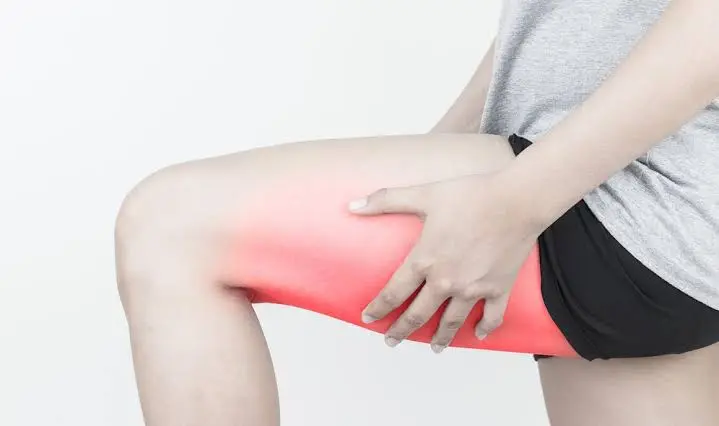

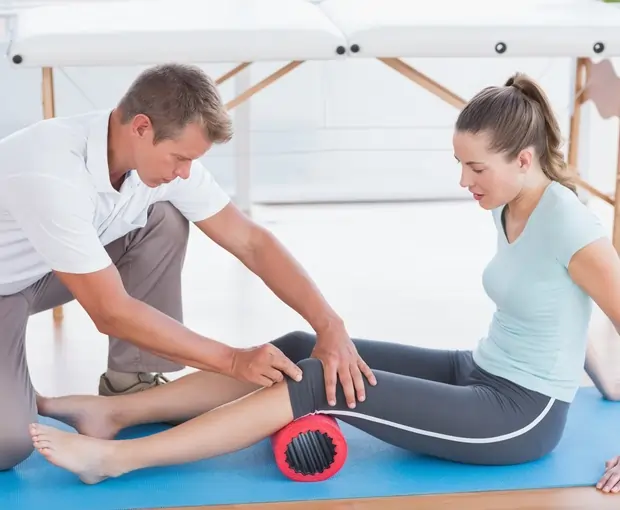
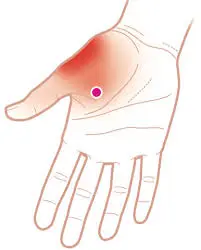
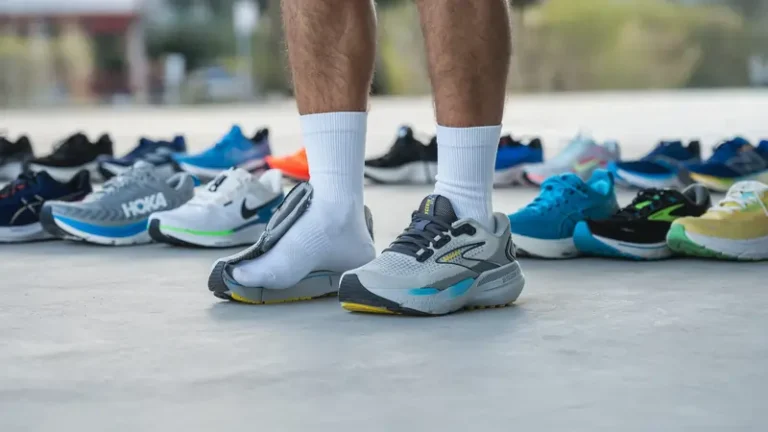
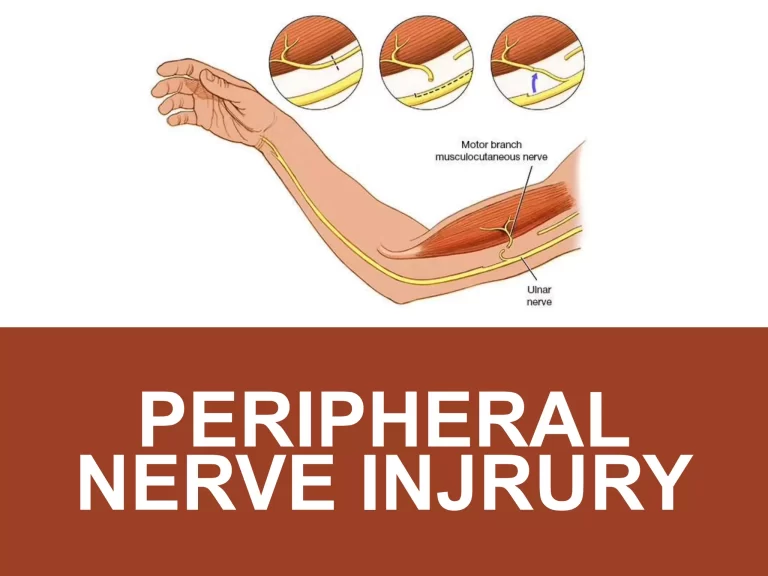

3 Comments